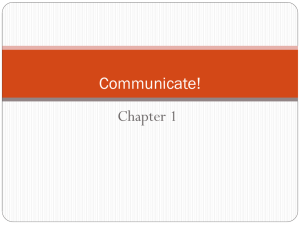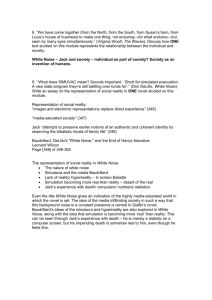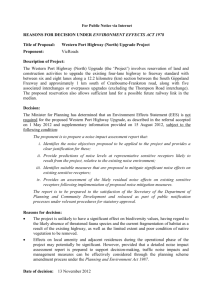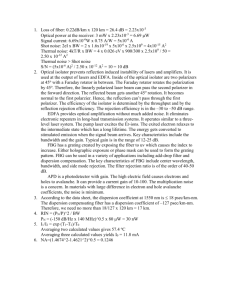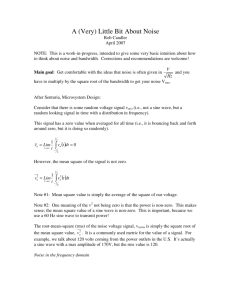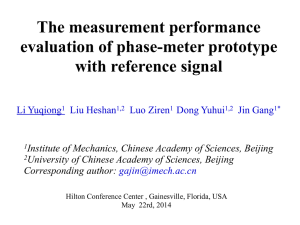0609249 Janko - NSF Nanoscale Science and Engineering
advertisement
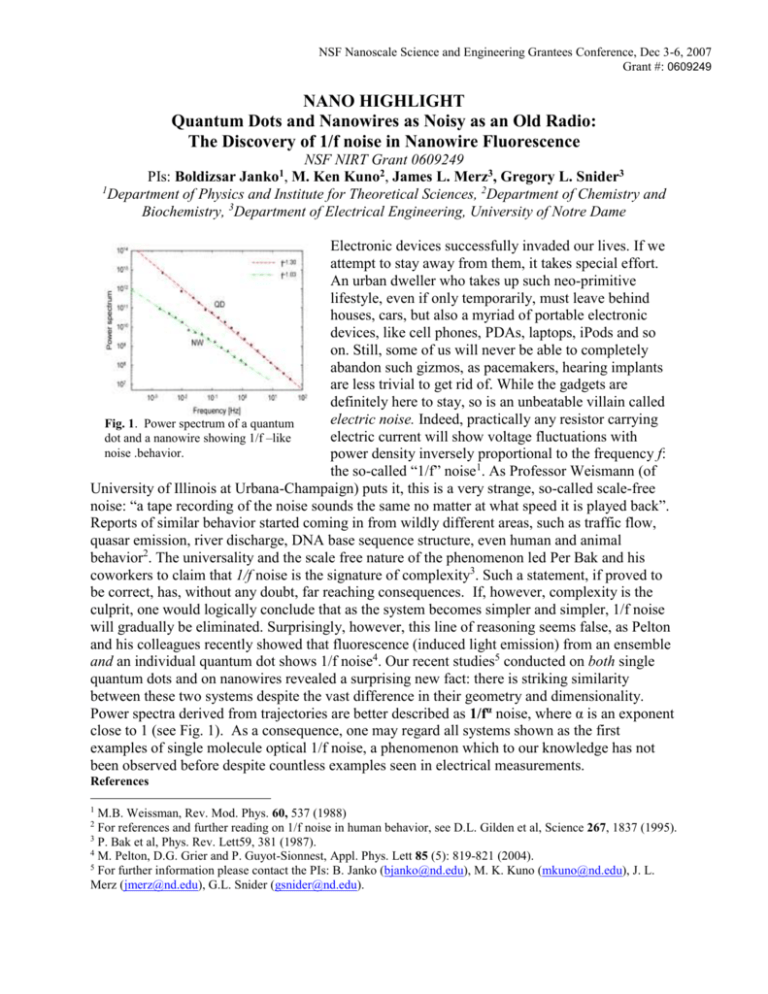
NSF Nanoscale Science and Engineering Grantees Conference, Dec 3-6, 2007 Grant #: 0609249 NANO HIGHLIGHT Quantum Dots and Nanowires as Noisy as an Old Radio: The Discovery of 1/f noise in Nanowire Fluorescence NSF NIRT Grant 0609249 PIs: Boldizsar M. Ken Kuno2, James L. Merz3, Gregory L. Snider3 1 Department of Physics and Institute for Theoretical Sciences, 2Department of Chemistry and Biochemistry, 3Department of Electrical Engineering, University of Notre Dame Janko1, Electronic devices successfully invaded our lives. If we attempt to stay away from them, it takes special effort. An urban dweller who takes up such neo-primitive lifestyle, even if only temporarily, must leave behind houses, cars, but also a myriad of portable electronic devices, like cell phones, PDAs, laptops, iPods and so on. Still, some of us will never be able to completely abandon such gizmos, as pacemakers, hearing implants are less trivial to get rid of. While the gadgets are definitely here to stay, so is an unbeatable villain called electric noise. Indeed, practically any resistor carrying Fig. 1. Power spectrum of a quantum electric current will show voltage fluctuations with dot and a nanowire showing 1/f –like noise .behavior. power density inversely proportional to the frequency f: the so-called “1/f” noise1. As Professor Weismann (of University of Illinois at Urbana-Champaign) puts it, this is a very strange, so-called scale-free noise: “a tape recording of the noise sounds the same no matter at what speed it is played back”. Reports of similar behavior started coming in from wildly different areas, such as traffic flow, quasar emission, river discharge, DNA base sequence structure, even human and animal behavior2. The universality and the scale free nature of the phenomenon led Per Bak and his coworkers to claim that 1/f noise is the signature of complexity3. Such a statement, if proved to be correct, has, without any doubt, far reaching consequences. If, however, complexity is the culprit, one would logically conclude that as the system becomes simpler and simpler, 1/f noise will gradually be eliminated. Surprisingly, however, this line of reasoning seems false, as Pelton and his colleagues recently showed that fluorescence (induced light emission) from an ensemble and an individual quantum dot shows 1/f noise4. Our recent studies5 conducted on both single quantum dots and on nanowires revealed a surprising new fact: there is striking similarity between these two systems despite the vast difference in their geometry and dimensionality. Power spectra derived from trajectories are better described as 1/fα noise, where α is an exponent close to 1 (see Fig. 1). As a consequence, one may regard all systems shown as the first examples of single molecule optical 1/f noise, a phenomenon which to our knowledge has not been observed before despite countless examples seen in electrical measurements. References 1 M.B. Weissman, Rev. Mod. Phys. 60, 537 (1988) For references and further reading on 1/f noise in human behavior, see D.L. Gilden et al, Science 267, 1837 (1995). 3 P. Bak et al, Phys. Rev. Lett59, 381 (1987). 4 M. Pelton, D.G. Grier and P. Guyot-Sionnest, Appl. Phys. Lett 85 (5): 819-821 (2004). 5 For further information please contact the PIs: B. Janko (bjanko@nd.edu), M. K. Kuno (mkuno@nd.edu), J. L. Merz (jmerz@nd.edu), G.L. Snider (gsnider@nd.edu). 2
